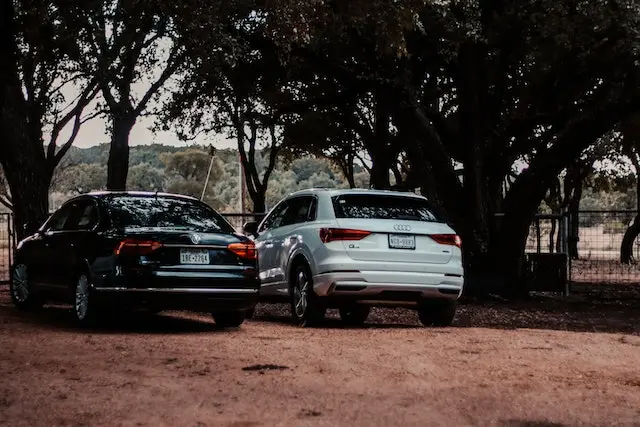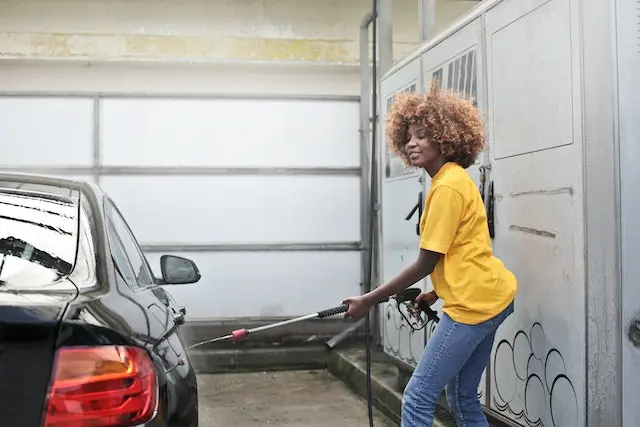There are only a few things that can cause you to lose it when you see your car. One of them is walking up to your vehicle just to realize some vandal has messed with it, using paint in a can. Knowing how to remove spray paint could come in handy in these situations.
If your vehicle has been vandalized with spray paint, there are several approaches to deal with it. While the first and most obvious one is to take your car to a local dealership and get a paint job, it’s also the priciest. In fact, you could end up staring at a $4,000 bill easily. In order to save money, you could go about this issue by removing the stains mechanically or with a solvent. Keep in mind that it won’t be as easy as cleaning the seat belts, but it will pay off in the end.
Examples of Car Vandalism
Car vandalism happens when someone does damage to a vehicle on purpose, and it comes in several forms. The first form is damage to the paint, such as scratches from an object (usually a key) or stains made by someone with a spray can. Other forms include slashed or stolen tires, which will either require you to know how to change a flat tire or pay for towing an inoperable car. Vandalism can happen to your vehicle if you regularly park it outside unprotected.
What Can You Do to Prevent This?
Recently, we are witnessing a decline in property crime and car vandalism numbers. However, they still occur occasionally, but it is fortunate that you can take steps to lower the risks. While you can not prevent them entirely, here’s what you can do to protect your property:
- Take all the valuable items out of your vehicle. If you leave any item of worth in plain sight, it’s only a matter of time before it gets noticed and tempts someone to break in. So, in order to prevent this from happening, you should secure all valuables, such as your phone, your stereo, jewelry, or any other object that may interest a thief.
- Adjust your habits by trying not to park in the exact same spot from day to day. It makes it harder for any criminal to target you or your car.
- Leave your vehicle in covered parking, if possible. A garage or covered parking may lower the chances of your car being vandalized. It isn’t all that hard for a criminal to enter or leave, but these places usually have a lot more security cameras than other locations.
- Leave your vehicle parked near other cars because higher foot traffic might prevent any vandalism from happening.
- See if there’s a well-lit area to park in to deter any criminals from vandalizing your car.
Although some criminals know how to disconnect a car alarm, having this type of security on your vehicle can also prevent at least some forms of vandalism.

How to Remove Spray Paint
Before you start panicking or you reach for your phone to call the local dealership and pay the heck out of a new paint job, you should know that spray paint can be removed with a proper technique. It will require you to be handy, careful, and above all else – determined, just like you would be in order to change the license plate bulb.
Depending on how much paint is sprayed over the surface of your vehicle, it can take from a few hours to a couple of days to remove everything. Although it seems like backbreaking work, it can save you a lot of money. And since there are two ways you can go about this – mechanical and with a solvent, I will discuss both approaches in detail so you can decide what works best for you.
Think of Safety First
No matter how you want to handle the problem, the first thing you should think about is safety. You will need to obtain protective gear in order to not only prevent getting messy but to protect yourself from any hazardous or dangerous situations. So, you’re not only trying to keep your outfit clean but also to protect your eyes, fingers, and other parts of your body just like you do when you want to replace U-joints.
List of Tools and Equipment
Some of the things you’ll use will probably already be included in your toolbox or garage because you need them when you’re replacing a valve stem (like safety gear). Nonetheless, here’s a complete list of everything you’ll need:
- A powerful garden hose or a pressure washer,
- Protective gear (safety eyewear, coveralls, mask, gloves)
- A pile of microfiber towels,
- Lambswool or chenille wash mitts,
- A car wash soap of good quality,
- Paint thinner for the solvent approach,
- Clay bar kit for the mechanical approach,
- Lubricant or detailing spray,
- Cleaner wax (3 in 1,)
- An applicator pad for wax,
- Kit for headlight restoration (if there’s any paint on the headlights,)
- UV protectant for headlights.
Once you have all the equipment obtained, keep in mind that you should have everything neatly organized so that each tool is easily accessible. It will save you a lot of precious minutes. Also, your workspace should be a large flat space, such as the floor of your garage, the driveway, or a parking spot in front of your home. Just check with the local authorities if you are respecting the codes when using the street.
The Best Clay Bar Kits on the Market
If you don’t own any clay bar kits yet, you should take a look at the best ones on the market currently. We’ve listed them in the table below.
| Brand | Pros | Cons |
| Chemical Guys Medium Clay Bar and Luber Kit | Very effective at eliminating impurities, spray paint, and rusted paint. It works on most surfaces, it’s affordable, and perfect for seasoned detailers. | Clay bars that are medium and heavy are stiffer and less flexible. |
| Mothers Speed Clay 2.0 | Very simple to use, reusable on 20 cars, excellent at eliminating impurities, reusable even after being tossed on the ground, and works on a moist car without the need for lubricant. | Moves too easily and is difficult to use in smaller spaces. |
| Meguiar’s Professional Detailing Clay (C-2100) | Highly effective at removing pollutants, easily malleable, packaged in plastic, and suitable for use on 7-8 vehicles. | It’s a little sticky, so a professional’s hands are needed. |
Start by Washing the Car
Giving your car a good wash will help to remove any dust, dirt, or other debris that could affect the smooth finish or paint job while you try to remove the spray paint. This is the first step in properly removing unwanted paint from your car. If you have a pressure washer, it might actually help to break up some of it and simplify the removal procedure. Washing your car in detail will also allow you to check various parts of it. See whether the windshield wipers that stopped working need fixing or check everything so you can tell if the car thermostat is bad.

The Solvent Method Explained
With this technique, the spray paint is essentially dissolved using chemical solvents like isopropyl alcohol or paint thinner. Isopropyl alcohol isn’t likely to be a powerful enough substance to perform the job right, depending on how much spray paint you will have to remove. While using acetone is advised by some sites, I don’t agree at all.
Acetone can really permanently damage many parts of the car, such as the headlights, door handles, and other plastic parts, if any drips get to them. Damaging the headlights could make driving at night potentially dangerous, so be wary.
Step One
Test paint thinner in a hidden region, like down by the back tire, before using it generously on the most noticeable section of your car. Avoid using this technique if the paint thinner stains or turns the paint yellow. Put some of the thinner on a fresh microfiber towel if everything appears to be in order following the initial test. As the chemical can trickle down and harm your car’s smooth finish or paint job, avoid applying it directly to the vehicle.
Step Two
Try to solely rub the towel in the spray paint’s vicinity. Use low to moderate pressure because the solvent’s chemical reaction, not the power of the scrub, is what actually removes the paint. Once you’re happy with the solvent’s effects, give your automobile a thorough rinse with a powerful hose spray or pressure washer to totally eliminate any residue that could stay on the paint and eventually cause lasting harm to the paint job.
Step Three
To leave a barrier of wax behind, go over the vehicle with the 3-in-1 cleaning wax. Buff the wax out with a fresh microfiber towel before it totally dries but has become murky.
The Mechanical Approach
This technique uses anything that must be physically rubbed on the paint to remove it as opposed to dissolving it. To start, without harming the actual paint job of the car, you should use the pressure washer to detach and eliminate as much of the paint as you can. Next, make a thin disc out of your preferred clay bar. Then, apply detailing spray or similar clay bar lubricant generously to the affected region.
Once you’ve sprayed the area, rub the region with the clay bar with moderate pressure. As soon as you notice that the clay bar is getting dirty, flip it over or fold it until you use up all the clean surfaces. Keep repeating until you remove all the unwanted paint from the car.
The next step is to use the 3-in-1 wax to scrub and buff over the cleaned surface. Before the product is completely dry, get to that pristine sparkly shine with a microfiber towel. You can remove the headlight paint in the same manner, but you should use the headlight kit if the clay bar isn’t doing anything. Spray over with a UV protectant to finish the job.

If All Else Fails – Call Professionals
Whenever you’re stuck with an issue involving your car, the easiest and perhaps the wisest way out is to reach out to a professional. Although removing unwanted spray paint from your vehicle may seem simple enough, almost as cleaning a steering wheel, some things are better left to trained hands. Especially if the paint has managed to dry thoroughly, and you’re afraid you’re going to damage the surface of your beloved four-wheeler.








